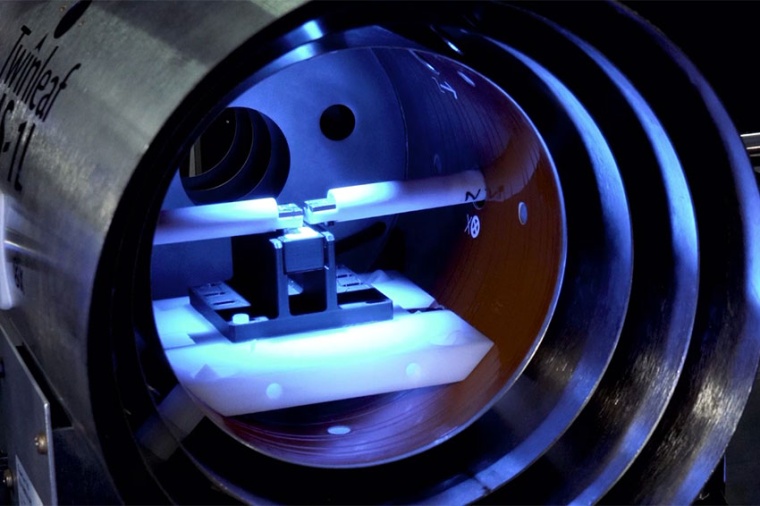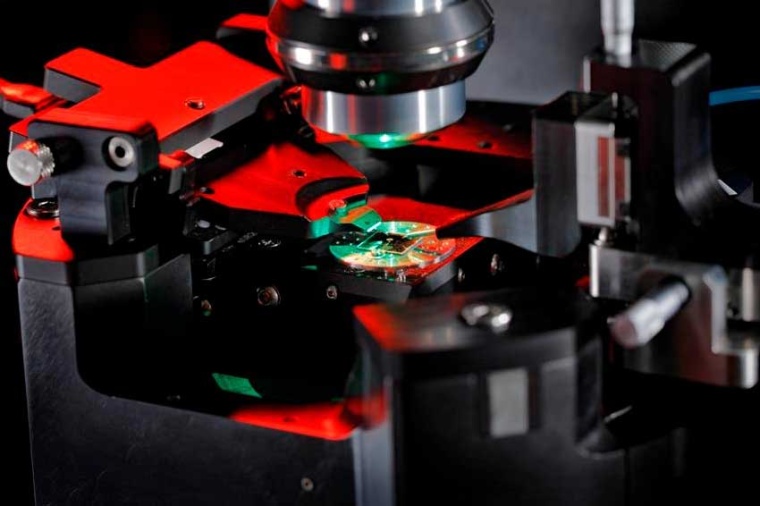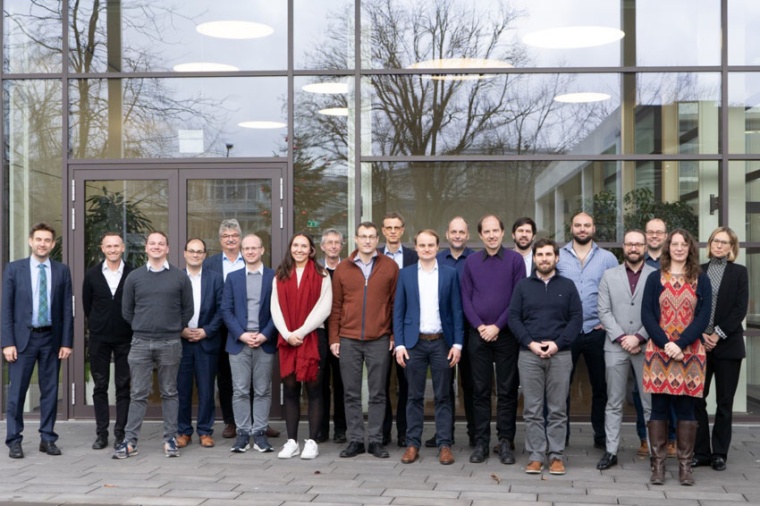Detecting smallest material defects at an early stage
In aerospace technology or the automotive industry, quantum magnetometers can increase the resilience and safety of systems and materials, researchers from the recently completed Fraunhofer lighthouse project QMag find.
Structural defects such as cracks, precipitations or other irregularities in metallic materials lead to local changes in the magnetic field, which can be tested non-destructively using magnetometers. Quantum magnetometers are much more sensitive than conventional technologies and can detect even tiny magnetic changes in materials. “In automotive and aerospace engineering, it is essential to ensure the reliability and durability of materials, but the technologies used to date are either too large or not available to industry,” says Prof Dr Rüdiger Quay, project manager of QMag and director of the Fraunhofer Institute for Applied Solid State Physics IAF.



In the project Quantum Magnetometry “QMag”, Fraunhofer researchers have investigated and further developed quantum sensors for specific industrial applications. They worked with two complementary approaches: On the one hand, they used optically pumped magnetometers (OPMs), which are characterized by their extremely high magnetic field sensitivity, and on the other hand, they used imaging quantum magnetometers based on nitrogen vacancy (NV) centers in diamond with extremely high spatial resolution.
Both technologies work at room temperature and are suitable for industrial applications. The research results show that the quantum magnetometers detect changes in the magnetic field of the samples even when the material fatigue is not yet visible. The researchers used OPMs to measure the changes in the magnetic field of ferromagnetic material samples while they were subjected to cyclic fatigue. They have thus demonstrated that quantum magnetometers detect the smallest material defects much earlier than conventional technologies. It was also possible to shorten the measurement time, which is very important for use in industrial processes such as component testing.
In material testing, OPMs and NV magnetometers can be used in complementary ways: While OPMs provide a dynamic signal from the entire sample, NV magnetometry can be used to measure the magnetic properties of individual damage on the micro- and nanoscale in detail. “In material testing, quantum magnetometers can help to estimate the failure of ferromagnetic components before the materials exhibit recognizable cracks. This plays a particularly important role in safety-critical components,” says Dr Simon Philipp, researcher at the Fraunhofer Institute for Mechanics of Materials IWM.
The researchers have also succeeded in developing a new NV magnetometer that leads to faster results in material testing and even enables further applications: the wide-field magnetometer measures magnetic fields over a large sample area in a very short time and is therefore suitable for rapid measurements in industrial applications. “The wide-field magnetometer can be used for the characterization and optimization of ferromagnetic materials, but it is also very well suited for applications in biomedicine and medical technology. Organic samples can be examined non-destructively and with imaging,” says Niklas Mathes, researcher at Fraunhofer IAF.
The researchers achieved a further success with the use of OPMs in flow measurement: they have developed a completely new method for measuring the flow velocities of liquids in a pipe based on OPMs. Magnetometric flow measurement is a non-contact method that can be applied to a wide range of media and is suitable for use in process control. This method represents a significant advance, as previous methods of flow measurement are usually invasive.
The project team also investigated the use of quantum magnetometers in micro and nanoelectronics and chip production and identified enormous potential: In quality control, quantum magnetometers can be used to measure electrical circuits and immediately detect faulty transistors, for example.
In order to make the research results accessible to industry and to test the technologies developed for specific applications, two testing facilities were set up as part of the project. A magnetically shielded room has been installed at the Fraunhofer Institute for Physical Measurement Techniques IPM, which can be used for test measurements. “The magnetic environment in the testing facility has a residual field of less than 5 nT and offers very high noise suppression. This allows us to measure even the smallest magnetic fields generated by brain waves. We make this environment available to industry for measurement services,” explains Dr Peter Koss, researcher at Fraunhofer IPM.
In order to facilitate the transfer of quantum magnetometers to industry, a further testing facility was set up at Fraunhofer IAF, which contains several NV magnetometers. It enables interested companies, especially SMEs and start-ups, to evaluate the benefits and potential of quantum magnetometers for their specific requirements.
Company
Fraunhofer Institute for Applied Solid State Physics IAFTullastraße 72
79108 Freiburg
Germany
most read

Successful conclusion of the IVSM Fall Meeting 2025 in Haikou, China
The 2025 Autumn International Vision Standards Meeting (IVSM) took place from November 3 to 7 in Haikou, Hainan, and attracted over 120 R&D engineers worldwide.

United Robotics Group restructures
The company focuses on the healthcare industry and innovation.

Agile Robots takes over Idealworks completely
The company has acquired the remaining shares in the BMW Group spin-off and now holds 100 percent of the company.

Change in management at Stemmer Imaging: Arne Dehn steps down
New interim CEO Paul Scholten takes over management

Softbank acquires ABB's robotics business
The Softbank Group has reached a definitive agreement to acquire ABB's robotics business.






